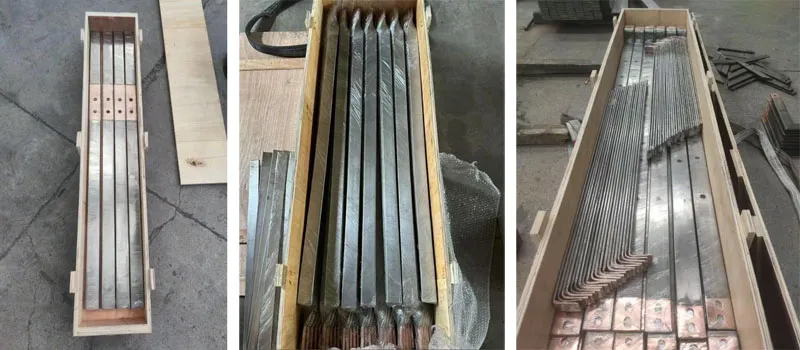
Titanium Copper Clad Bending and Punching Busbar is a bimetallic laminated conductor composed of a high-conductivity copper core and an anti-corrosive titanium outer layer, specially designed for complex machining such as CNC bending, drilling, punching, tapping, and slotting.
These customizable Ti-Cu busbars are ideal for high-current applications in corrosive environments where standard copper bars would degrade. Thanks to the explosive bonding or hot roll bonding process, the titanium and copper layers form a robust metallurgical bond, allowing excellent mechanical performance even after multiple fabrications.
Titanium copper clad bending square/rectangular bar(Thickness 6-30Width 20-150mm)
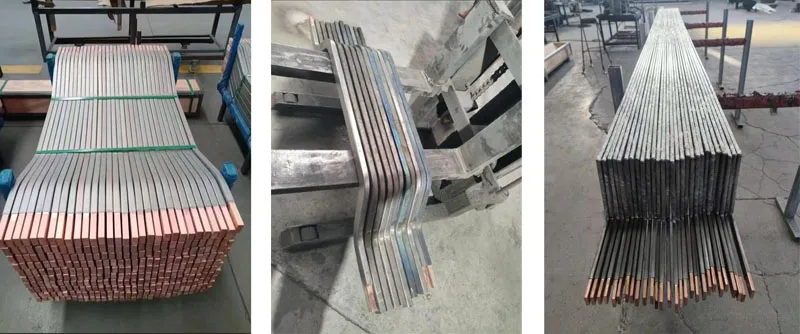
Titanium clad copper rods bending/Ti-Cu Clad Copper Titanium Rod Bar With Bending Ends(Diameter Φ 8-50 mm)
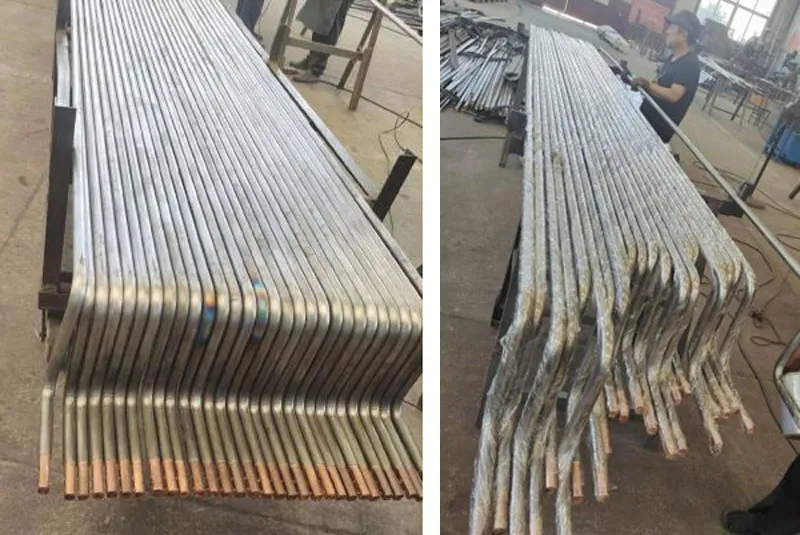
Titanium Copper Clad Punching Busbar square/rectangular bar/rod/Titanium clad copper machining porous parts
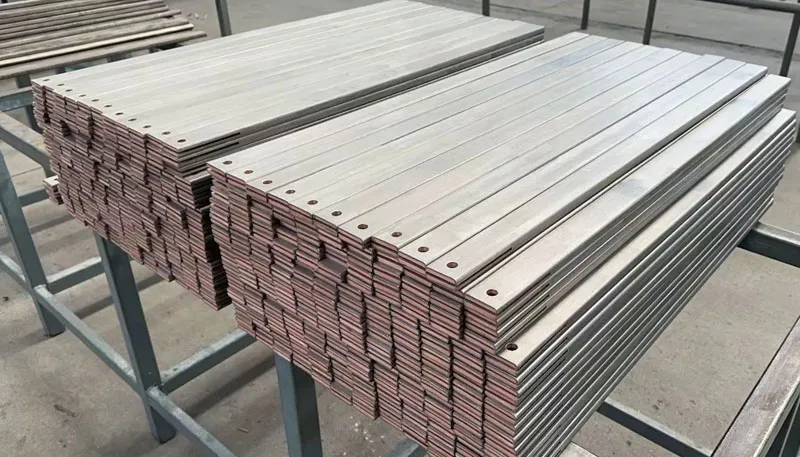
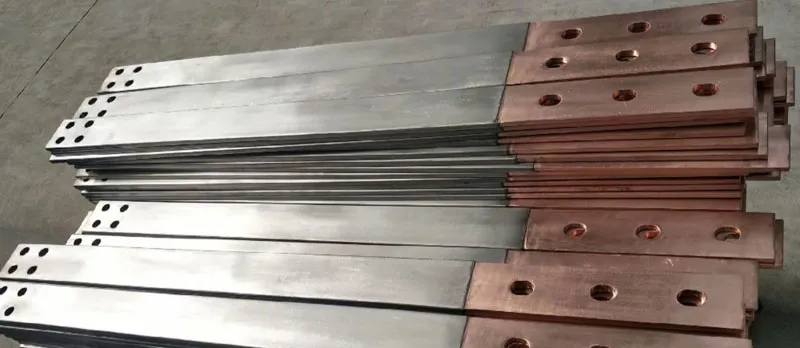
Titanium Copper Clad Bending Punching Busbar/Titanium clad copper machining parts/Titanium clad Copper processing busbarTitanium Copper clad bending punching formed parts/Titanium Copper clad bending punching formed parts(square/rectangular bar/rod)
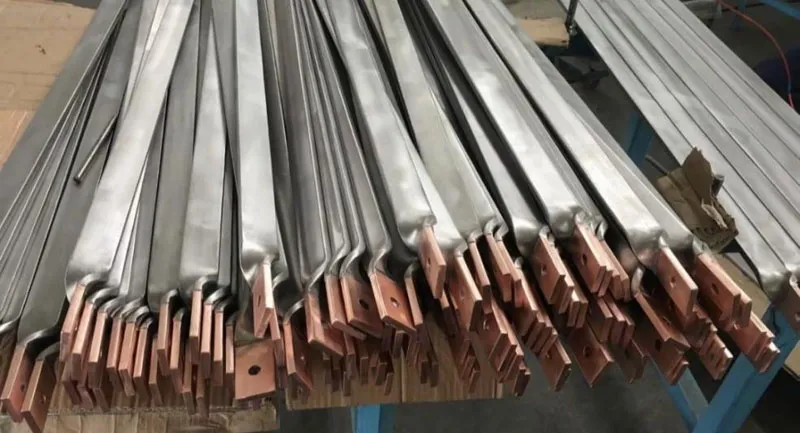
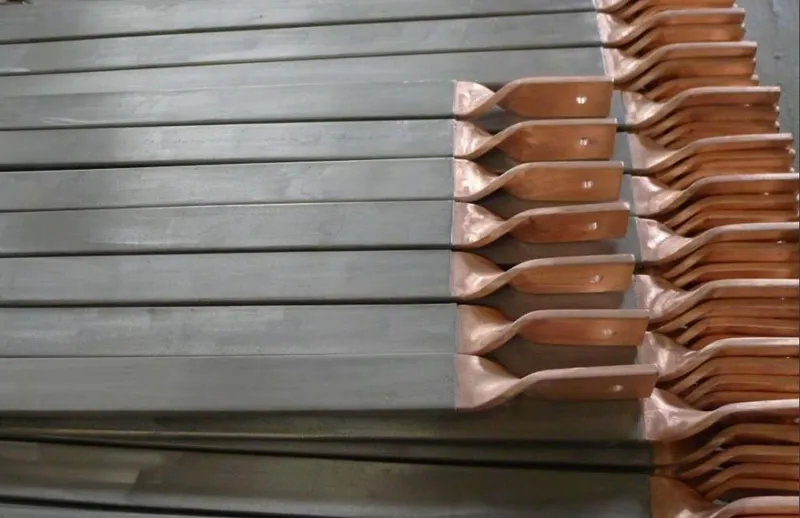
The production of Titanium Copper Clad Busbars with bending and punching features involves advanced bimetal bonding and precision CNC machining. Below is the step-by-step manufacturing process designed for custom-shaped, high-current, corrosion-resistant busbars:
1. Raw Material Selection
High-conductivity electrolytic copper (C11000 or T2)
Corrosion-resistant titanium sheets/bar (Grade 1 or Grade 2)
Inspection of material thickness, purity, and surface quality
2. Surface Preparation
Degreasing and acid pickling for both metal surfaces
Mechanical brushing or sandblasting to enhance bonding
Oxide layer removal to ensure metallurgical fusion
3. Explosive Bonding / Hot Roll Cladding
Metals are aligned and bonded using explosive welding or hot roll bonding
Achieves strong interfacial bonding without melting core materials
Forming a composite plate with uniform clad thickness
4. Heat Treatment (Optional)
Stress relief annealing to improve bonding strength
Adjust microstructure for improved machinability
5. Precision Cutting & Sizing
Cut to required dimensions (length, width, thickness)
Ensure tight tolerance for CNC fabrication
6. CNC Bending & Punching
Bending at precise angles as per drawings
Hole drilling, slotting, chamfering, and edge rounding
Ensures consistent shape and fit in electrical systems
7. Quality Inspection
Ultrasonic testing for bonding integrity
Shear and peel strength tests
Dimensional and surface finish inspections
8. Surface Treatment
Pickled or polished surface
Optional oxidation protection treatment
Deburring for safety and conductivity
9. Packaging & Delivery
Anti-rust wrapping with plastic film
Export-grade wooden crates
Custom labeling for traceability and installation guides
